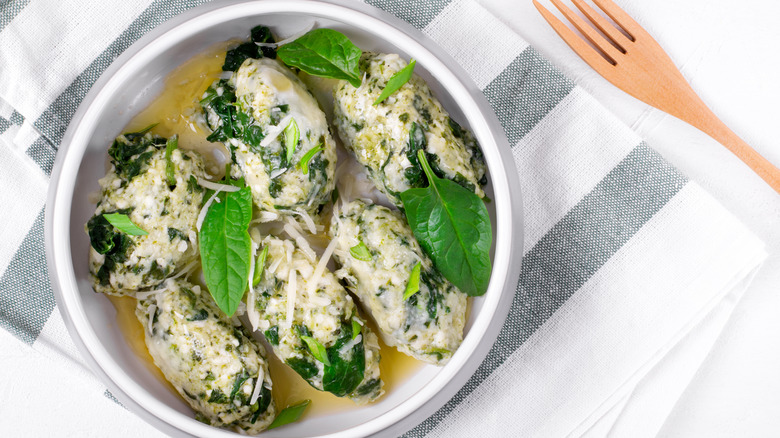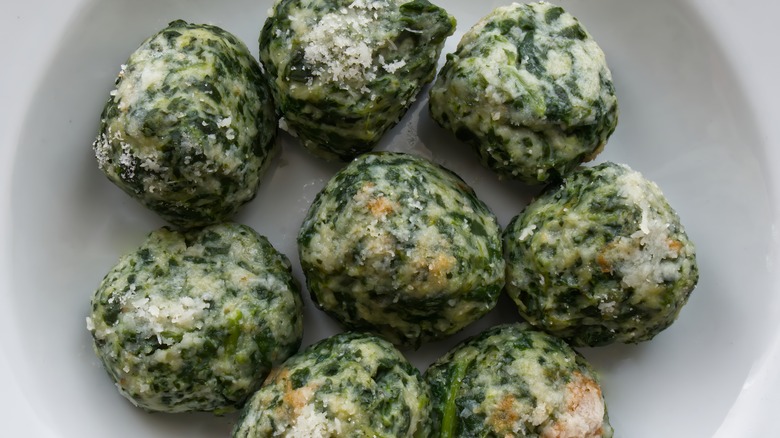The 2 Simple Ingredients You Need For Homemade Gnudi
Sometimes the best part of a dish is the filling. The creamy chocolate in French silk pie. The cheese and chicken in chimichangas. The ricotta cheese and spinach in ravioli. When it comes to the last Italian entrée, there is another Italian dish that provides a ravioli-like flavor without the pasta case. Meaning "naked dumpling" in Italian, gnudi is very similar to what is stuffed inside a ravioli, according to Lidia. They are also lighter than gnocchi, according to Delish, because they do not contain potatoes.
Without the pasta pillowcase to hold the filling, gnudi requires less time and fewer ingredients to make than ravioli. Additionally, Serious Eats explains that gnudi doesn't require special equipment to be made entirely from scratch. Once made, gnudi is often served with a tomato sauce, but can also be accompanied by a warm mushroom and garlic broth or a browned butter sauce with peas and mint. While the sauce in which they are served varies, there are two essential ingredients for gnudi that give them flavor and form.
Don't forget the cheese and flour
There are two ingredients that are required to make gnudi: Flour and ricotta cheese. Flour and eggs are used to bind the gnudi together for cooking, per Serious Eats. The ricotta cheese not only adds flavor but also texture and substance to the gnudi. But if it's too thin, the gnudi is at risk of falling apart.
When preparing the ricotta cheese for the gnudi, it is important to drain it first. Serious Eats recommends scraping it into a fine mesh strainer or a strainer that has been lined with cheesecloth to remove the liquid by pressing the ricotta cheese against the strainer. Food Network's recipe for gnudi, courtesy of Giada de Laurentiis, calls for 1 cup of whole milk and 1 cup of grated Parmesan. Lidia's gnudi has a little different ratio of ricotta (1 pound) and grated Parmigiano-Reggiano or grana Padano (1/4 cup). When it comes to the amount of flour used for gnudi, enough to keep them together by rolling them in flour is used. One extra step in addition to the flour coating — chilling the gnudi — will help them stay together when cooked.
So, next time you crave homemade ravioli but don't have the time to make pasta, try going with gnudi for the same cheesy and saucy deliciousness.

